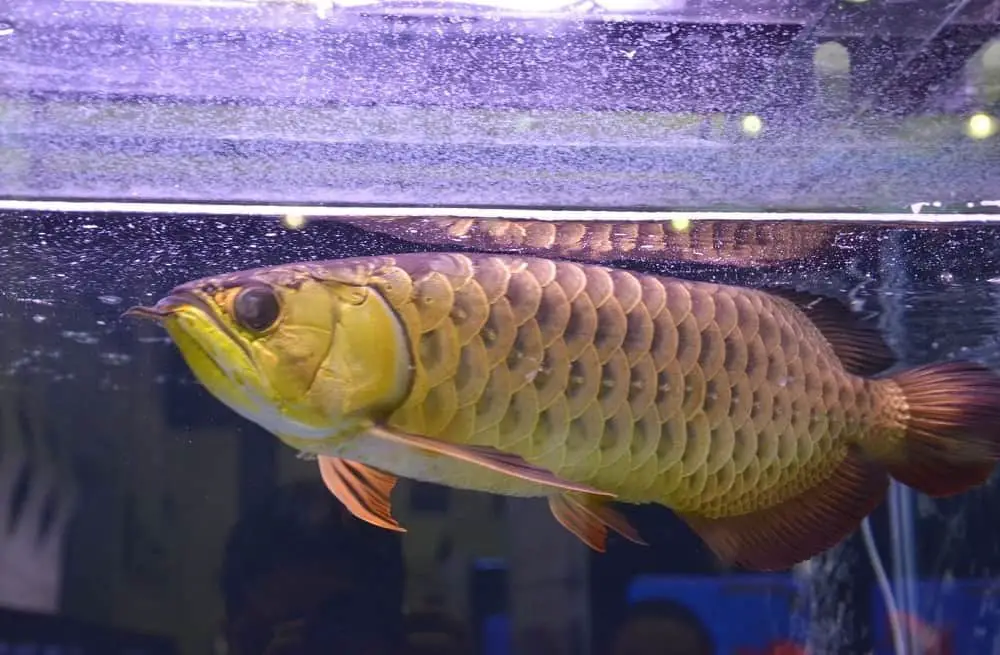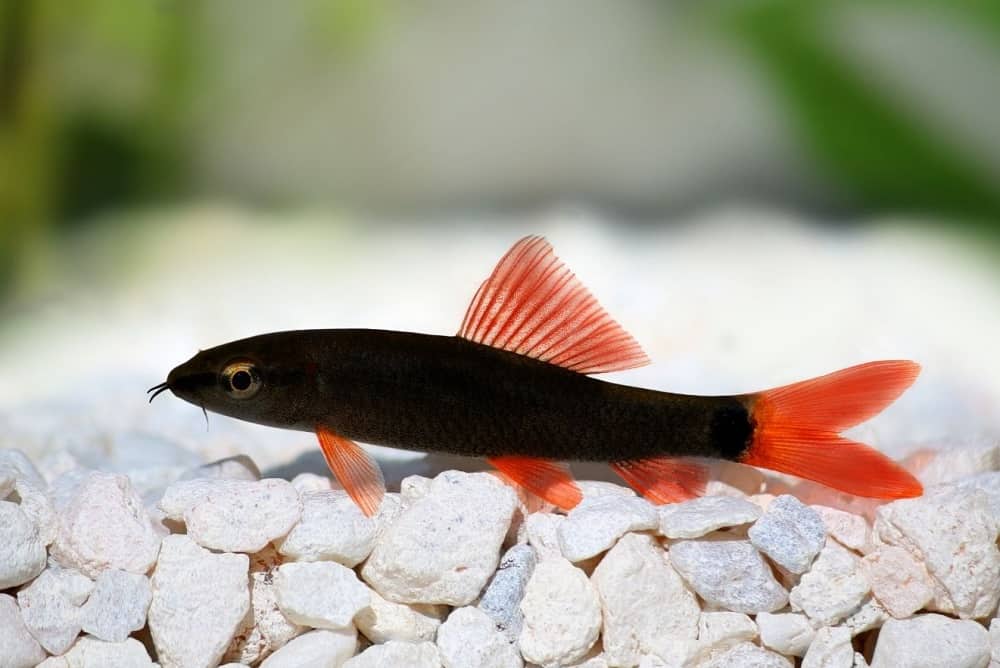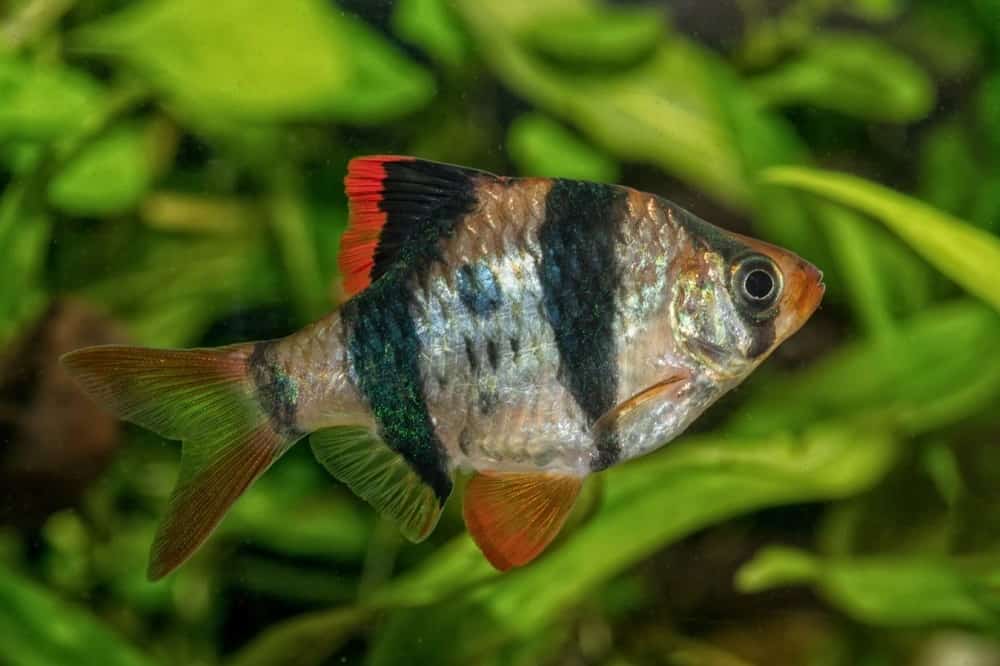The Silver Arowana belongs to the Osteoglossidae family and is a South American freshwater species. Its scientific name is Osteoglossum bicirrhosum but it is also referred to as the Monkey Fish or the Dragon Fish. In the wild, they are found in the Amazon River Basin.
Due to their predatory behavior, this species is not recommended for beginners although they do make a great addition to aquariums, especially those owned by more experienced fish keepers.

Care Guide
Silver Arowana are a rather demanding species that can be difficult to care for. You will need to ensure that their needs are met for them to live fulfilled lives.
Tank Size
As a fairly large species, Silver Arowana requires a generously sized tank that has a minimum capacity of 250 gallons. If possible, you should opt for a tank that is even larger than this. The size of the tank that is needed will also be determined by the number of these fish that you intend to house in it.
A juvenile does not require such a substantially sized tank. In fact, a 60 gallon tank is going to be sufficient, however, you must remember that as the fish grows, it will require a bigger tank. It is worth noting that these fish can be quite fast growers, especially in their first few months.
If you do not provide your fish with a big enough tank, it is unlikely to reach its maximum lifespan. Moreover, if the tank is too small, the fish may suffer from body deformities. A lack of space can also cause the fish to become stressed.
It is important to remember that Silver Arowana are known to jump so you will need to make sure that the tank is securely closed with a lid to prevent this issue.
Tank Mates
Due to the aggressive nature of these fish, it can be difficult to find tank mates that they are compatible with. Their large size also means that they are going to consume a lot of space inside the tank.
The list of potential tank mates is fairly limited for the reasons that we have mentioned above. Avoid other large and aggressive species as they are likely to target the Silver Arowana.
Also, avoid adding smaller species because it is likely that the Silver Arowana will eat them. Try to find a balance between size and temperament.
Recommended tank mates include Catfish, Angelfish, Parrotfish, Green terrors, and Jaguar Cichlids.
Same Species Tanks
Although Silver Arowana can be raised in the same tank when they are young, as they get older, they become less tolerant of other members of the same species.
If you still intend to keep more than one Silver Arowana, you must ensure that you have enough space. You will need a large tank or a large pond and you should keep a minimum of six in a group.
Water Parameters
In the wild, Silver Arowana are typically found inhabiting warm waters such as tributaries and streams. You must try and replicate the conditions of the environment that they are naturally found in.
These fish can be pretty adaptable but they prefer soft to moderately hard water that is between 1 to 8 dKH. Moreover, they will also cope well in whitewater or blackwater although they are quite sensitive to poor quality water along with any changes in the water.
Silver Arowana prefers water that is slightly warmer between 75 to 82 degrees Fahrenheit, however, you should try and keep it closer to 78 degrees Fahrenheit. As for the pH level, the water should be between 5 to 7.5.
As we have mentioned, this species is rather tolerant but you should still try and maintain the parameters that we have identified above.
What To Put In Their Tank
These fish aren’t particularly fussy about their tank setup. Whilst they like plants, they prefer to have more space to swim. As such, you should avoid over decorating and overfilling the tank.
For the substrate, you can use fine gravel. You can then add a few strong-rooted plants. If they do not have strong roots, there is a risk of the fish pulling them up out of the sand. After adding the plants you can then add some stones and driftwood.
For Silver Arowana, a powerful filtration system is crucial as they are known to produce a lot of waste. A filter will help to remove waste from the tank whilst maintaining the necessary concentration of ammonia.
Common Diseases
Unfortunately, just like many other species, Silver Arowana do not have complete immunity against disease. Not only is there a risk of them suffering from common diseases such as fin rot and ich but they can also experience issues with a condition known as ‘dropsy’ and Cloudy eyes.
Dropsy is particularly problematic amongst younger Silver Arowana. This is a condition that affects the fish’s lungs and causes them to swell up. As this species does not have eyelids, they are at greater risk of abrasion and inflammation and this can make their eyes cloudy.
Your fish may also suffer from physical injuries that have been inflicted upon them following contact with sharp objects inside their tank.
There is more risk of your fish suffering from disease if they are kept inside a tank where the water quality is poor. As such, you must remember to conduct regular water checks and regularly change the water.
Food & Diet
Generally, Silver Arowana are carnivores, however, they can also be considered to be omnivorous. Their diet is pretty varied and in the wild, they will eat a combination of large insects, frogs, crustaceans, frogs, and small fish.
There have even been instances where they have eaten creatures bigger than themselves such as snakes and rabbits.
When keeping these fish in captivity, you should try and replicate their natural diet as closely as possible. Their diet should mainly be made up of meat but they can also survive on frozen and live foods.
There are also specific foods available that are intended for Silver Arowana. Bloodworms, earthworms, crickets, crab, and shrimp are going to be favored by this species.
Lifespan
On average a Silver Arowana will live for between 10 and 15 years which is rather lengthy when compared to other fish species. Your fish is only going to live to its maximum lifespan if it is provided with optimal conditions inside its tank. As these fish have a long lifespan, you must make sure that you are committed to owning one.
Appearance
The Silver Arowana is a commonly sought-after species that is known for its unique appearance. Its body is covered with silver scales, although these are more of blue color on the younger fish.
Perhaps their most noticeable feature is their vertical mouths which is also referred to as a ‘drawbridge’. The shape of their mouths makes it easier for them to target their prey.
When you look at these fish from a side angle, they appear to have flat bodies. Both their dorsal and anal fins extend down towards their small tailfin.
Size
Silver Arowana have long bodies and can grow up to 4 ft long. During the first year of their lives, you should expect this fish to grow around 2 inches a month.
Behaviour & Temperament
Although these fish are known for their aggressive behavior and bullying tactics, they can also be quite skittish. Because of this, you should avoid placing the tank in a busy room where there is a lot of foot traffic because this is likely to scare them.
Breeding
Breeding Silver Arowana in the wild isn’t hugely common due to the space that they require. In the wild, the spawning season begins during the colder months. Moreover, they need to bond with other fish and this can be quite a challenge because they don’t tend to get along with one another very well.
These fish are known as mouth breeders. Simply put, the female lays the eggs in the nest before the male scoops them up into its mouth. He will then incubate these eggs for 40 to 50 days before these eggs hatch. Even after incubation, they will remain there until they reach 5 weeks.
Gender Differences: Male vs Female
Identifying differences between male and female Silver Arowana can be quite difficult, however, there are few noticeable differences to make yourself aware of.
During the spawning season, the females usually have a rounder and more prominent abdomen. The body and dorsal fins of the males are also longer and they also have bigger heads.
Fun Facts
- As a species, they are known to be great jumpers and can jump up to 5 feet out of the water, hence why their tanks need to be securely covered to prevent this from happening.
- The scientific name of this species means that they have two barbels. These barbels protrude from the top of these fish’s heads.








